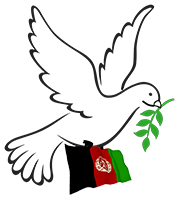Beijing hopes peace and reconstruction in Afghanistan will occur in a way that witnesses the formation of an inclusive government.
China’s special envoy for Afghanistan, Yue Xiaoyong, said in an interview with an Iranian media outlet that he hopes the caretaker government of Afghanistan will fulfill its promises regarding improving education, especially girls’ education.
In this interview, Yue Xiaoyong called external solutions to Afghanistan’s issues unsuccessful and said that more work needs to be done to integrate Afghanistan into the global community.
He added that Beijing hopes peace and reconstruction in Afghanistan will occur in a way that witnesses the formation of an inclusive government and a clear fight against terrorism.
China’s special envoy for Afghanistan said: “We have noticed that the caretaker government has announced its interest in improving education, including girls’ education. We hope they [the officials of the caretaker government of Afghanistan] can fulfill their plans and promises and improve girls’ education.”
China’s special envoy for Afghanistan also added that the international community should not interfere in Afghanistan’s internal affairs. Referring to the role of neighboring countries in Afghanistan’s issues, he stressed regional efforts for the quicker integration of Afghanistan into the global community.
Yue Xiaoyong further said: “In the process of peace and reconstruction in Afghanistan, we must build our efforts on equality and mutual respect, and gradually and as soon as possible, strive to bring Afghanistan back into the global community.”
“Undoubtedly, the people of Afghanistan, especially girls, need education, training, and schooling. The Islamic Emirate, just as it has fought against terrorism over the past three years, should continue to do so in the future. Regional countries can play a significant and fundamental role in achieving permanent peace and stability in Afghanistan,” said Salim Paigir, a political analyst.
The Islamic Emirate has not yet commented on these remarks by China’s special envoy for Afghanistan; however, it had previously pledged the provision of educational opportunities for girls and urged countries not to interfere in Afghanistan’s internal affairs.
 Afghanistan Peace Campaign
Afghanistan Peace Campaign


